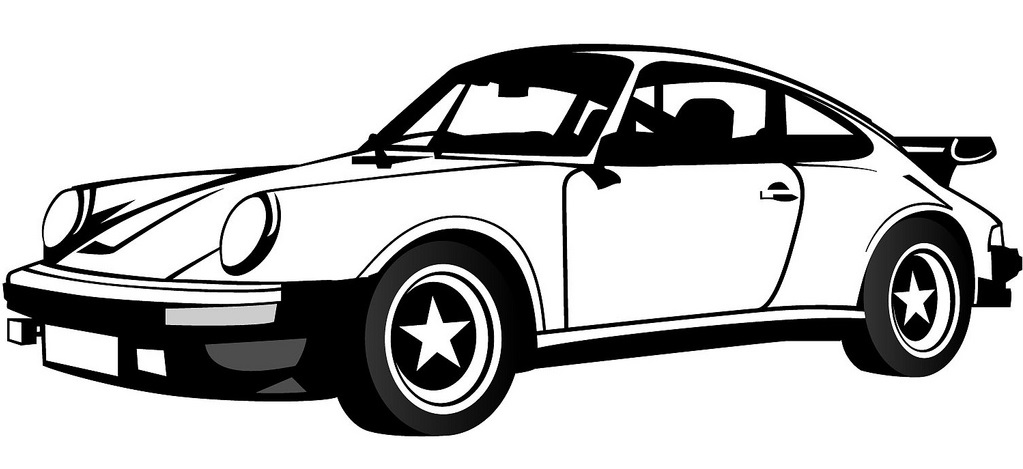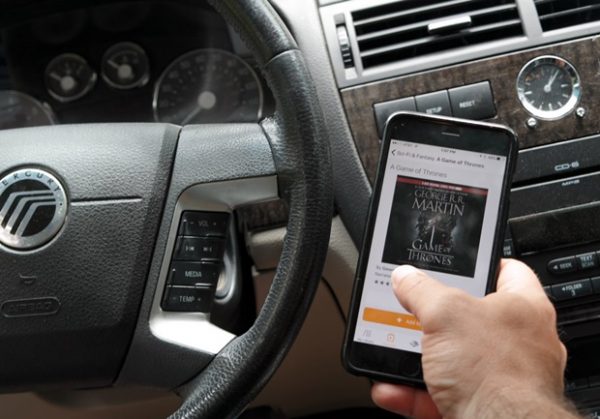A brief history of
Maybach
Introduction
The car manufacturer Maybach has made an important impact on the automotive world. In this article we will give a brief but detailed history of the Maybach marque.
We will look at the origins of Maybach looking at who, why, where and when Maybach was founded. We'll look at the design of the iconic Maybach logo and what are some the more significant Maybach models.
We'll take a glance at what racing history the Maybach has and who some of the most important people have been in the history of Maybach over the years.
Who, where, when and why was
Maybach founded?
Maybach, a prestigious luxury car manufacturer, was founded by Wilhelm Maybach in 1909. Born out of a desire to create the finest automobiles in the world, Maybach set out to establish a brand that would epitomize luxury, craftsmanship, and engineering excellence. The company was established in Germany, specifically in Friedrichshafen, a city located near Lake Constance. Maybach's vision was to create automobiles that would surpass all expectations and cater to the most discerning clientele.
Wilhelm Maybach, a talented engineer and designer, had gained recognition for his work with Gottlieb Daimler in the early days of automotive engineering. After parting ways with Daimler, Maybach pursued his dream of building his own automobiles. The goal was to create vehicles that would set new standards for comfort, performance, and innovation.
Maybach cars quickly gained a reputation for their exceptional quality and attention to detail. The brand's commitment to luxury was reflected in every aspect of its vehicles, from the opulent interiors adorned with the finest materials to the powerful engines that provided smooth and effortless performance. Maybach cars were meticulously handcrafted, ensuring that each vehicle met the highest standards of craftsmanship.
The Maybach brand was initially successful, catering to an exclusive clientele that appreciated the brand's dedication to luxury and refinement. However, like many luxury car manufacturers, Maybach faced challenges during economic downturns and changing market dynamics. After a hiatus in production, the brand was revived by Daimler AG in 2002.
The modern-day Maybach brand continues to embody the spirit of its founder, delivering vehicles that redefine luxury and elegance. Maybach cars are known for their exquisite design, state-of-the-art technology, and exceptional comfort. With a focus on bespoke craftsmanship and personalized experiences, Maybach remains a symbol of prestige and sophistication in the automotive world.
How did the
Maybach logo originate?

How did the Maybach logo originate?
The Maybach logo, a symbol of luxury and refinement, has evolved over the years to reflect the brand's identity and heritage. The logo showcases the elegance and sophistication associated with Maybach vehicles, capturing the essence of the brand's commitment to craftsmanship and exclusivity.
The original Maybach logo featured the name "Maybach" in a classic, elegant font. The lettering was often accompanied by an emblem, which typically included a laurel wreath and a double "M" intertwined. This emblem symbolized the brand's excellence and prestige.
In recent years, the Maybach logo has undergone a transformation to align with the modern aesthetic and design language. The new logo retains the iconic double "M" emblem, representing the brand's heritage, while adopting a more contemporary and sleek appearance. The lettering "Maybach" is usually written in a stylish and refined font, exuding elegance and sophistication.
The logo's color scheme often features a combination of silver, chrome, and black, conveying a sense of luxury and exclusivity. The choice of colors reflects the brand's commitment to timeless design and meticulous attention to detail.
Overall, the Maybach logo is a symbol of automotive excellence, representing the brand's commitment to craftsmanship, luxury, and elegance. It embodies the heritage and history of the Maybach brand, while also capturing the brand's modern and progressive outlook.
What are some of the significant
Maybach models?
Maybach, known for its opulent and luxurious vehicles, has produced a range of remarkable models throughout its history. From the early 20th century to the present day, Maybach has consistently delivered high-performance vehicles that redefine automotive luxury.
One of the notable models from the early years of Maybach was the Maybach Zeppelin, introduced in the 1930s. This exquisite car was equipped with a powerful engine and featured advanced technology for its time. The Maybach Zeppelin set new standards in luxury and performance, offering a smooth and comfortable ride combined with exceptional power and speed.
In the late 20th century, Maybach introduced the Maybach 57 and 62 models, which became iconic representations of automotive luxury. These sedans boasted exceptional craftsmanship, exquisite design, and cutting-edge technology. The Maybach 57 and 62 were powered by robust engines, delivering impressive performance on the road. These models were customizable to the highest degree, allowing customers to personalize every aspect of their vehicle, from interior features to exterior finishes.
As Maybach transitioned into the 21st century, it introduced the Maybach Exelero, a true masterpiece of engineering and design. The Exelero was a high-performance luxury coupe, featuring a sleek and aerodynamic body. Powered by a twin-turbocharged V12 engine, the Exelero delivered astonishing performance and speed. With its distinctive styling and unparalleled power, the Maybach Exelero was a testament to Maybach's commitment to pushing boundaries and creating exceptional vehicles.
In recent years, Maybach has continued to elevate its offerings with models like the Maybach S-Class. Combining the elegance and sophistication of the Mercedes-Benz S-Class with Maybach's signature luxury, these vehicles provide the pinnacle of automotive opulence. The Maybach S-Class models offer powerful engines, advanced technologies, and meticulously crafted interiors, ensuring an unrivaled driving experience.
Maybach's most recent addition to its lineup is the Maybach GLS SUV, catering to the growing demand for high-end luxury SUVs. The Maybach GLS combines the versatility and spaciousness of an SUV with the refinement and comfort expected from the Maybach brand. With its powerful engine options, state-of-the-art features, and sumptuous interior appointments, the Maybach GLS redefines luxury in the SUV segment.
Maybach's most significant models demonstrate the brand's unwavering commitment to delivering uncompromising luxury and performance. From the iconic Zeppelin to the groundbreaking Exelero and the contemporary S-Class and GLS, Maybach vehicles have consistently set new standards in automotive excellence.

One of Maybach's Most Iconic Models
Who are some of the most important people in
Maybach's History
Behind the success of Maybach are the talented individuals who have contributed their expertise and passion to the brand's legacy. From visionary engineers to skilled designers, these individuals have played a vital role in shaping Maybach's most significant achievements.
One notable figure in Maybach's history is Wilhelm Maybach, the co-founder of the company. Born in 1846, Wilhelm Maybach was a renowned German engineer and inventor. He was a close collaborator of Gottlieb Daimler and played a pivotal role in the development of the first high-speed internal combustion engine. Maybach's engineering genius and dedication to innovation laid the foundation for the technological advancements that would define Maybach vehicles.
Another key figure in Maybach's history is Bruno Sacco, a renowned automotive designer. Sacco joined Maybach's parent company, Mercedes-Benz, in 1958 and became the head of design in 1975. During his tenure, Sacco played a crucial role in shaping the design language of Mercedes-Benz and Maybach vehicles. His designs emphasized elegance, aerodynamics, and timeless aesthetics, contributing to the distinctive and iconic appearance of Maybach models.
Continuing the legacy of visionary leadership, Dieter Zetsche made significant contributions to Maybach during his tenure as the CEO of Daimler AG, the parent company of Maybach. Zetsche led the relaunch of the Maybach brand in the early 2000s, aiming to position it as a symbol of ultimate luxury and craftsmanship. Under his guidance, Maybach reintroduced opulent models that epitomized the pinnacle of automotive luxury.
Additionally, the Maybach brand has collaborated with world-class designers and craftsmen to create bespoke and limited-edition models. One notable partnership was with Hermès, the renowned French luxury brand. Together, they created the Maybach 57 S "Hermès Edition," which featured exquisite interior detailing and exclusive Hermès accessories, showcasing the expertise of both brands in craftsmanship and luxury.
Furthermore, the skilled engineers and artisans at Maybach's manufacturing facilities have played a vital role in bringing the brand's vision to life. Their meticulous attention to detail, craftsmanship, and dedication to quality ensure that every Maybach vehicle meets the highest standards of excellence.
These individuals, from the pioneering engineers to the visionary designers and skilled craftsmen, have left an indelible mark on Maybach's history. Through their expertise, passion, and commitment to excellence, they have shaped Maybach into a symbol of unparalleled luxury and craftsmanship.

One of the most influential people in the history of Maybach
Maybach's Racing History
While Maybach is primarily associated with luxury and opulence, the brand has also dabbled in the world of racing, albeit on a more limited scale. Racing has provided Maybach with an opportunity to showcase the performance capabilities of its vehicles and demonstrate its engineering prowess in a competitive environment.
One notable racing endeavor of Maybach was its participation in the legendary 1930s European Grand Prix races. During this period, Maybach produced a series of powerful and technologically advanced racing cars, known as the "White Elephants" due to their imposing size and distinctive white livery. These cars featured innovative engineering, including supercharged engines and advanced suspension systems, making them formidable contenders on the racing circuit.
In the 1936 Avus Grand Prix, one of the most prestigious races of the era, Maybach achieved a notable victory with its Type SW 38 race car. The car, driven by German racing driver Rudolf Caracciola, showcased Maybach's engineering excellence by dominating the competition and securing a commanding victory. This triumph solidified Maybach's presence in the racing world and further enhanced its reputation for high-performance vehicles.
Although Maybach's involvement in racing waned in the subsequent decades, the brand made occasional appearances in classic car rallies and exhibitions, allowing enthusiasts to appreciate the historical significance and performance capabilities of its vintage racing cars. These events served as a testament to Maybach's racing heritage and showcased the enduring appeal of its early racing models.
Furthermore, Maybach's modern-day luxury models have occasionally participated in high-profile events such as the Mille Miglia, an endurance rally held in Italy. While not strictly a racing competition, the Mille Miglia attracts prestigious automobile brands and provides an opportunity for participants to showcase their vehicles' performance and elegance on a challenging and iconic route.
Maybach's foray into racing may not have been as extensive as some other manufacturers, but it nevertheless highlights the brand's commitment to engineering excellence and performance. The successes of Maybach's racing cars in the past and the brand's occasional participation in modern-day events serve as a reminder of its racing heritage and its ability to blend luxury and performance in its vehicles.
Summary
Maybach, known for its luxurious and opulent automobiles, has also had a modest presence in the world of racing. While not as extensively involved as some other manufacturers, Maybach's racing history showcases its commitment to performance and engineering excellence. The brand made its mark in the 1930s European Grand Prix races with its powerful and technologically advanced "White Elephants" racing cars, achieving notable victories and establishing its reputation on the racing circuit. Although Maybach's racing endeavors diminished in subsequent years, the brand has occasionally participated in classic car rallies and prestigious events like the Mille Miglia, further emphasizing its racing heritage.
Maybach's racing history serves as a testament to the brand's engineering prowess and ability to combine luxury with high-performance capabilities. The victories of Maybach's racing cars in the past and the brand's occasional participation in modern-day events highlight its enduring legacy in the racing world. While Maybach is primarily known for its luxurious vehicles, its racing heritage adds an intriguing dimension to its identity, showcasing the brand's ability to excel not only in opulence but also on the track. With a blend of power, technology, and elegance, Maybach continues to captivate automotive enthusiasts with its distinct presence in both the world of luxury and racing.
View Maybach Car Specifications
More Manufacturer Histories.

























